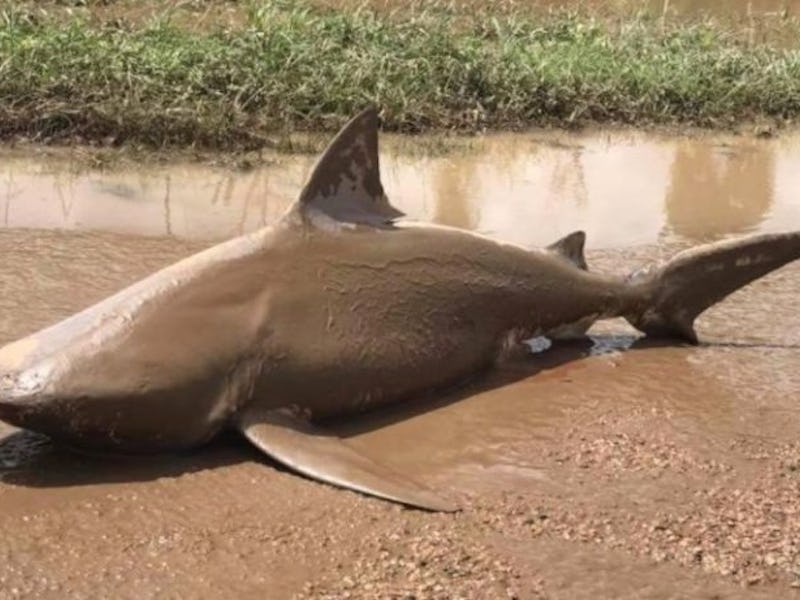Cyclone Debbie ripped through the Australian state of Queensland this week, leaving 52,000 people without power and one massive bull shark in a puddle in a town called Ayr. On Thursday, the Queensland Fire and Emergency Service tweeted a photo of the bull shark, warning residents that it wasn’t yet safe to dip their toes into the floodwater, considering man-eaters like the shark could still be lurking about.
The whole thing reeked of a bad made-for-TV movie, but given what we know, “sharknado” is actually a fairly plausible explanation.
For all its flaws, the 2013 film wasn’t completely scientifically incorrect, despite its ludicrousness: In the movie, sharks get picked up by extra-strong cyclones — a wind system that rotates inwardly and moves from areas of high to low atmospheric pressure — and get dropped onto Los Angeles, where flooding provides routes for the newly introduced sharks to eviscerate the inhabitants of the city of angels.
To be clear, there aren’t any records of sharknados happening IRL, but fish-nados — involving smaller species — have been recorded intermittently for centuries. In 1921, an article titled “Rains of Fishes” appeared in Natural History Magazine, chronicling years of evidence that “fishes occasionally fall from the sky” — often together with a storm. One record from 1866, for example, described fish falling in Mecklenburg and Steuer in Germany with rain “accompanied by a waterspout.” More recently (at least relatively), fish ranging from 2 to 9 inches in length fell from the sky in Marksville, Louisiana in 1947 at a maximum density of one fish per square yard.
So, we know it can happen with small fish; but what does it take for large fish — bull sharks can weigh 210 to 290 pounds — to be lifted out of the sea and some 7-8 miles inland? Surely, storm strength has to do with it, but how much is hard to say. We do know that Cyclone Debbie had gust speeds of 31 miles per hour, with some gusts reaching 163 miles per hour. (By definition, a “cyclone” is a storm in which the maximum sustained surface wind speed ranges from 39 to 73 miles per hour.) There’s little doubt that Debbie, labeled as category 5 — having the potential for catastrophic damage — was a very strong storm indeed.
The author of “Rains of Fishes,” after exhausting all other explanations, couldn’t deny that storm-induced waterspouts were a plausible cause for the showers of small fish:
There is left to us but one other explanation,—the action of heavy winds, whirlwinds, and waterspouts. Practically all those who have described rains of fishes have noticed that these were the accompaniments of thunderstorms or monsoon rains with their heavy winds, or of waterspouts. One who has witnessed the activities of a whirlwind or who has seen the wreckage left in its path will have no difficulty in believing that such a whirlwind or even the heavy winds accompanying a hard storm could pick up and transport to some distance objects of such light weight as small fishes.
But according to WIN News Townsville journalist Philip Calder, the Australian journalist who first reported on the shark, it’s just as likely that the shark had drifted inland via the Burdekin River, which is known to be home to bull sharks as well as turtles and barracudas.
“He must’ve gotten caught in a torrent and confused, beached himself on the side of the road,” Calder told news.com.au.
Still, as we can see from the map below, Ayr isn’t terribly close to the Burdekin river, and it’s also not too far from the coast. While we don’t have enough information to know for sure, the historical data suggest we have no choice but to accept the possibility that Ayr’s bull shark did indeed arrive by cyclone — further supporting the idea that Sharknado might not have been a mockumentary after all.
Ayr isn't especially far from the ocean, but it's also kind of close to the Burdekin River.
